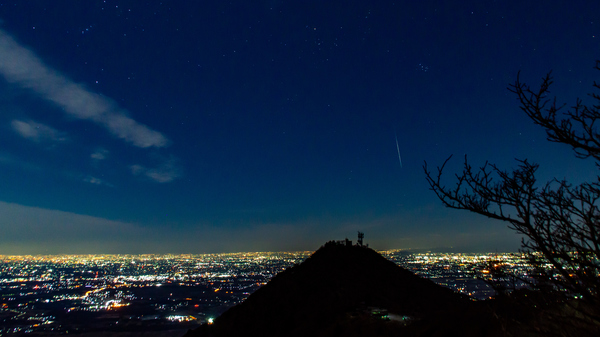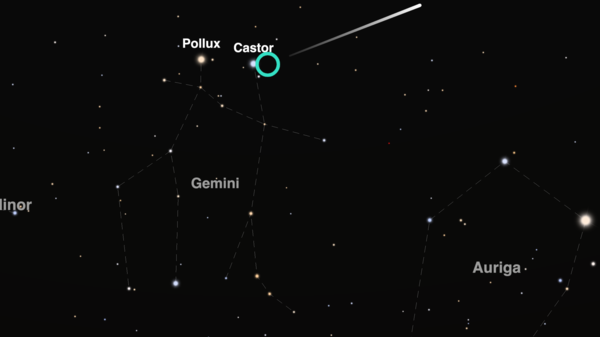Don’t Miss the Geminids 2023
The Geminid Meteor Shower 2023 peaks just after a New Moon, making the skies perfectly dark for a shooting star show.

The Geminid Meteor Shower is one of the brighter meteor showers of the year—here from Mt.Tsukuba in Ibaraki Prefecture, Japan.
©iStockphoto.com/Toshihiro Nakajima
All Night Show
The Geminid Meteor Shower peaks around the night of December 13–14 or 14–15, depending on your time zone. It is one of the major meteor showers of the year, with up to 150 meteors per hour.
Because the New Moon is on December 12, there is only the tiniest sliver of a Waxing Crescent Moon, which will set soon after the Sun.
The lack of Moonlight gives beautiful dark skies. The radiant will be below the horizon at the start of the evening, but it will rise high in the sky throughout the night. As a result, there will be an excellent chance to see the bright meteors all night, from dusk till dawn.
Comes from an Asteroid
Unlike most meteor showers, the Geminids don’t come from a comet but from an asteroid known as 3200 Phaethon.
Dust and debris from the asteroid—known as meteoroids—enter Earth’s atmosphere and generate flashes of light as the meteors burn up through the atmosphere. The streaks of light we see in the sky are a meteor shower or, poetically put, shooting stars.

You can see the Geminids meteor shower all night from December 14 to 15. The image is a screenshot from our Interactive Meteor Shower Map above the western horizon of New York on December 15 at 5:30 am local time.
©timeanddate.com
Radiating from the Gemini Constellation
“The meteors in a meteor shower appear to come from the same point in the sky—this is called the radiant,” says timeanddate astrophysicist Graham Jones.
“For this meteor shower, the radiant is in the constellation of Gemini, which is why they’re called the Geminids.”
Go to the Gemini constellation on our Night Sky Map
“Meteors can appear in any part of the sky, so you don’t have to specifically find the radiant point,” adds Graham. “However, it can be helpful to know when the radiant reaches its highest altitude, or its highest position in the sky.”
“Generally speaking, the higher the radiant, the more meteors you can see.”
Track the radiant using our Geminids tool
Find a Dark Viewing Spot
Any stargazer would tell you that darkness and patience are the keys to meteor watching: find a place away from the city lights with little light pollution, and get comfortable.
Dress for the weather, bring something to sit on, like a blanket or a lawn chair, and then wait. Your eyes need to adjust to the darkness, and it can take up to 20 minutes, so put away your phone.
This meteor shower is visible in both the Northern and Southern Hemispheres.
What’s Next?
You can catch the Ursids peaking around December 22–23. Also, early in 2024, the Quadrantids peak around January 3–4.